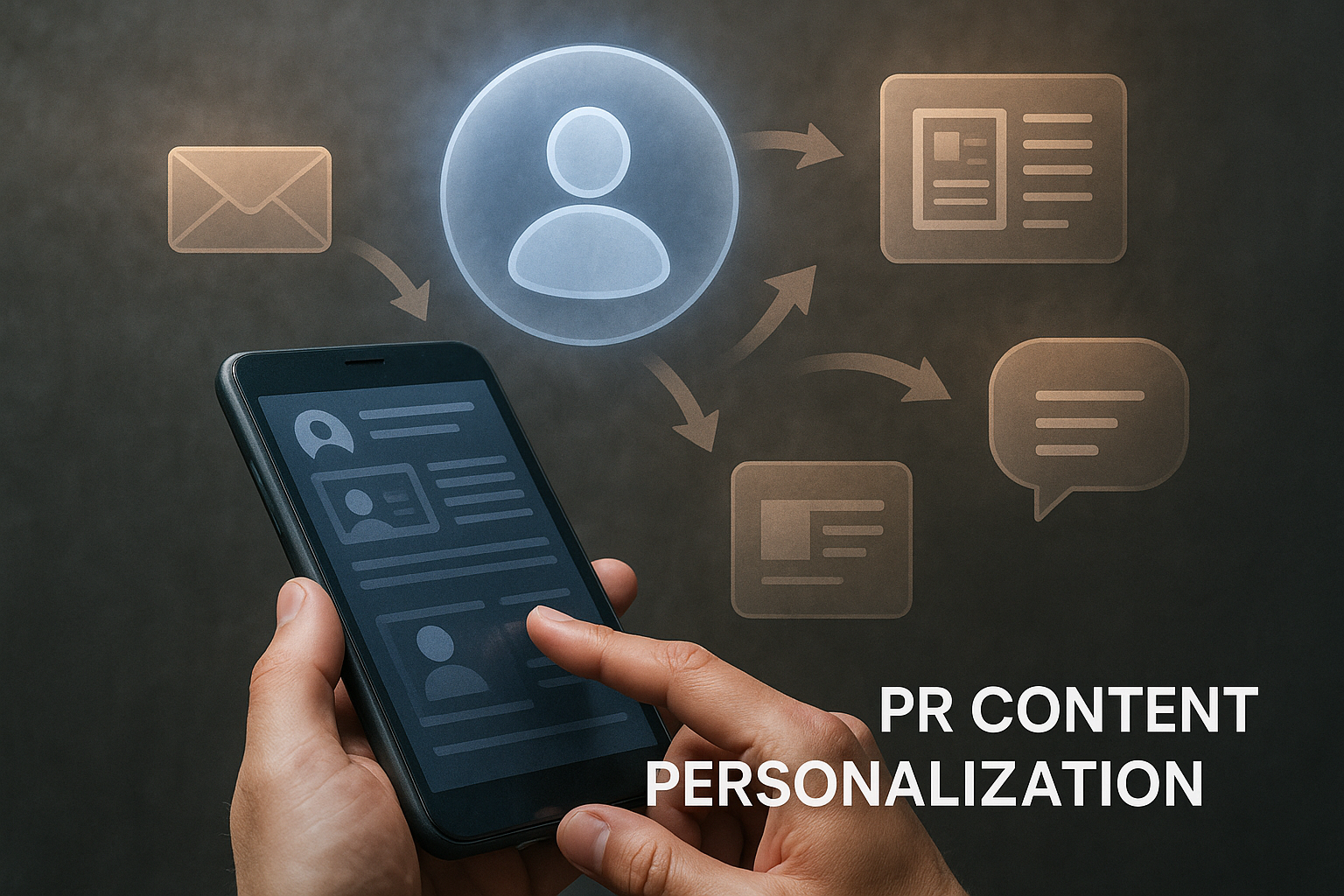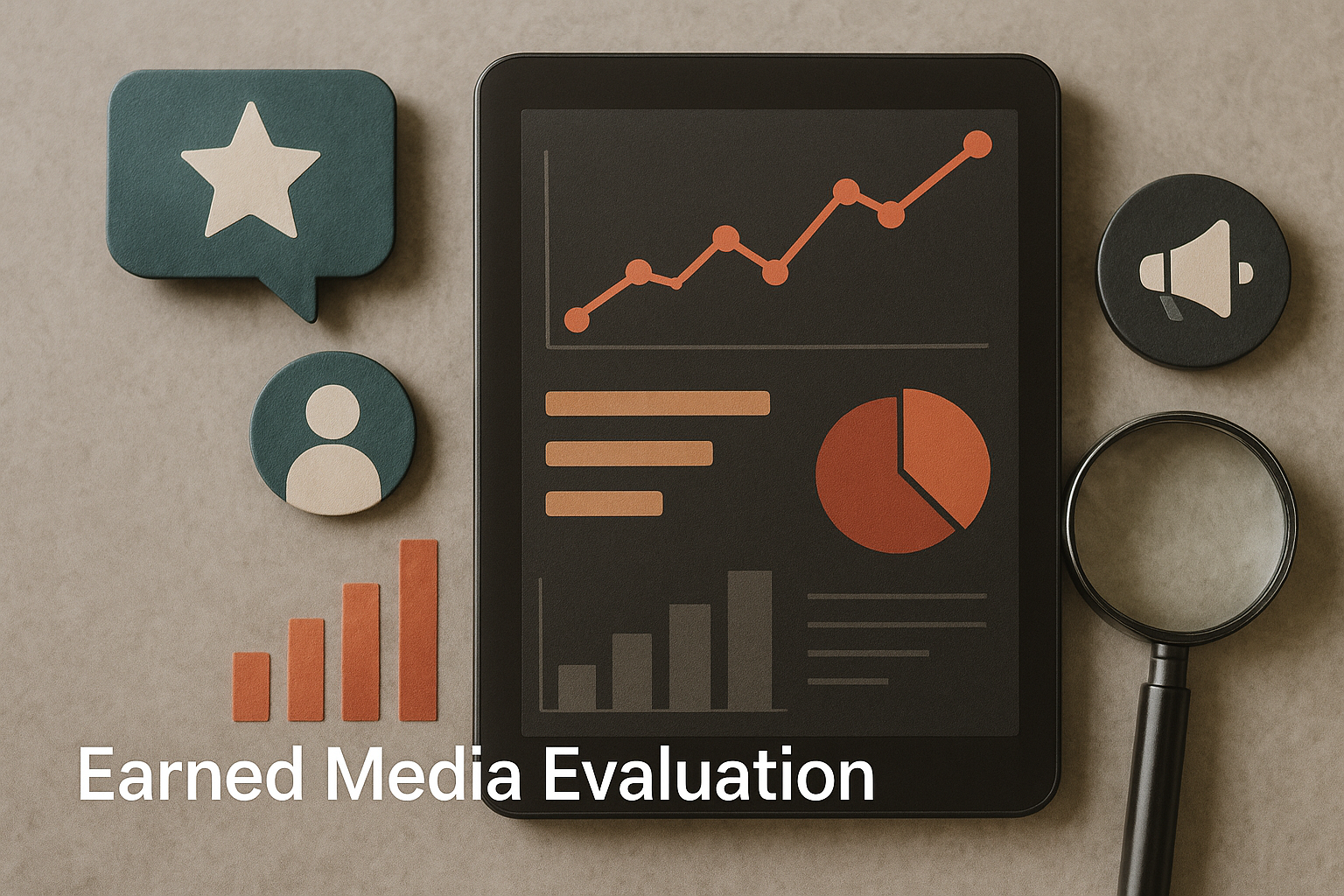Discover how PR content personalization turns ordinary messages into meaningful connections that truly resonate.
It usually starts small. A sentence that feels alive. A story that somehow knows what you’ve been thinking. It isn’t luck. It’s someone paying attention really listening. That’s where connection begins, quietly but deeply.
There’s too much noise out there. Everyone’s talking, few are being heard. That’s why PR content personalization matters. It cuts through the blur. It turns a passing glance into a pause, a click into curiosity. It makes people care, even for a moment.
The generic stuff? It’s fading. People want stories that sound like them, that see them. They want honesty wrapped in understanding. And when a brand manages that, something changes, the message stops selling and starts feeling.
This isn’t about clever strategy. It’s about empathy. About knowing when to speak and when to simply listen. Because in the end, the words that last aren’t the ones shouted the loudest, they’re the ones that feel true enough to stay.
What PR Content Personalization Really Means

It’s easy to mistake personalization for a quick name drop in an email or a few custom lines in a press release. But that’s not it. Real personalization runs much deeper. It’s about shaping messages that sound like they belong to messages that fit naturally into someone’s world instead of forcing their way in. It’s the quiet shift from talking broadly to speaking meaningfully.
At its heart, PR content personalization is built on understanding. It’s about seeing people, not profiles. It means listening before you speak, observing before you plan, and creating stories that feel personal even when they reach thousands. When done right, it doesn’t just catch attention it holds it. Because people don’t connect to statements. They connect to stories that sound like home.
From Generic to Genuine
For a long time, PR was about reach. The more outlets, the better. But now, attention isn’t earned by how loud you speak, it’s earned by how real you sound. People don’t want polished slogans or predictable lines. They want to feel seen. They want something that matches their values, their tone, their life.
That’s where personalization steps in. It turns a standard press story into a shared moment. Imagine a campaign that tells one version of its story to families, another to investors, and another to local communities. Each version holds the same truth but speaks its own language. That difference in tone, focus, and rhythm is what makes the story breathe.
Data With a Human Touch
Yes, data helps. It tells us who’s reading, what they engage with, and when they’re most likely to listen. But data alone can’t build connections. It can guide the hand, not write the message. The real insight still comes from empathy knowing how people feel, not just what they click.
When Impact Authority shapes its communication, the goal isn’t to fill inboxes, it’s to start conversations that matter. Every word is written with intention, every message grounded in something true. Because in the end, the most powerful strategy isn’t digital, it’s human.
The Shift From Talking to Listening
That’s what personalization really changes. It flips the direction. Instead of brands broadcasting, they begin listening. Instead of one message for all, there’s room for nuance. Every tailored release, every segmented campaign, becomes less about selling and more about connecting.
And when that happens, trust builds quietly. People start to respond not because they were targeted but because they were understood.
The Real Meaning
So, what does it really mean? It means letting stories feel natural again. Not overworked. Not overly polished. Just honest. Because in the noise of modern PR, the voices that last aren’t the loudest, they’re the ones that sound like they were meant for you.
The Power of Targeted Public Relations Messaging
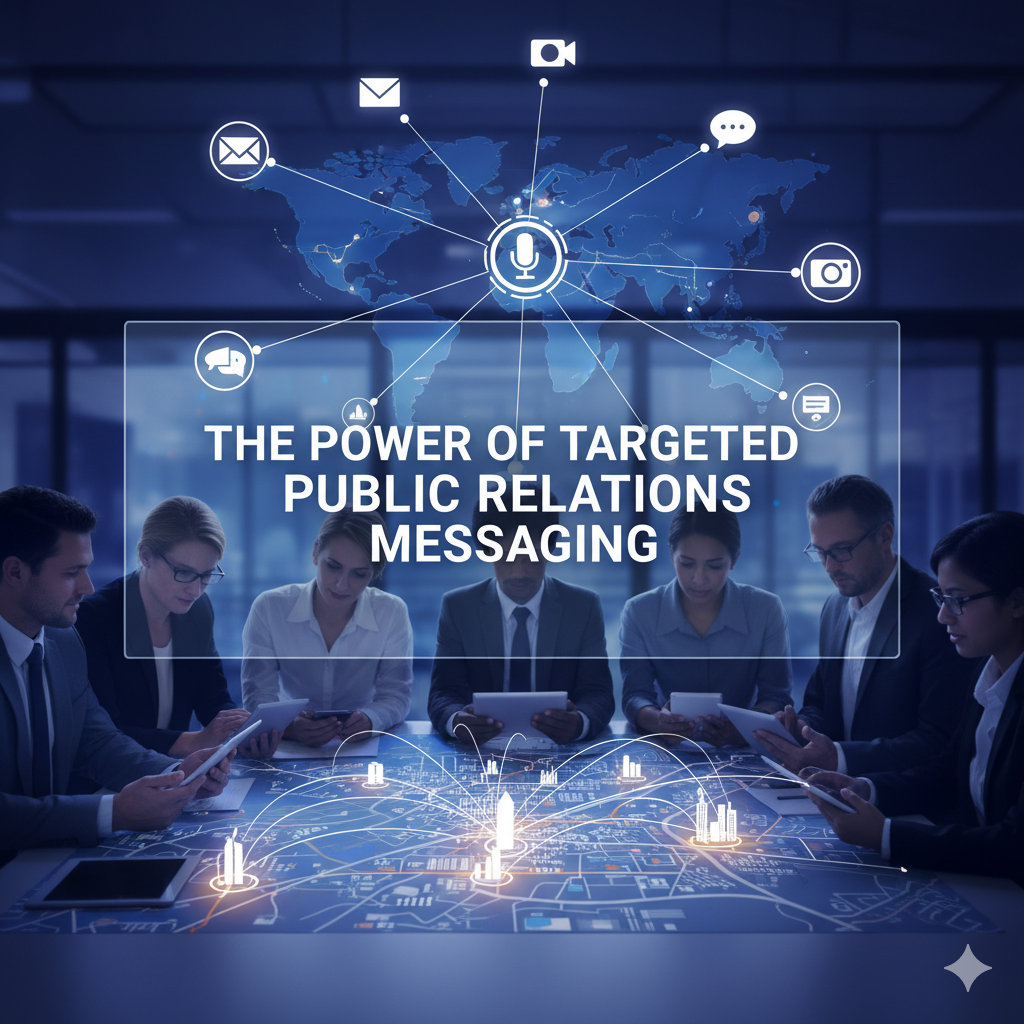
Every message has a job. Some inform, some persuade, but the best ones those that truly land connect. And that connection rarely happens by chance. It happens when words are sent with direction and purpose. That’s where targeted public relations messaging finds its place. It’s less about volume, more about intention. Less about talking to everyone, more about speaking to the right ones.
Knowing Who’s Listening
Before a message can matter, you need to know who’s meant to hear it. Not just their age or where they live but what drives them. What makes them pause? What earns their trust. Real understanding comes from curiosity, not data alone.
A brand that listens first writes differently. It speaks to hearts, not just headlines. A campaign for investors will sound different from one meant for customers or journalists and that’s the point. The story doesn’t change, but the tone shifts. The focus shifts. And in those small shifts, connection happens.
This is where PR content personalization blends perfectly with targeting. It turns communication into a two-way rhythm, one where both sides recognize each other.
Beyond Reach and Numbers
There’s this myth that being specific means losing reach. It’s the opposite. Precision doesn’t shrink your audience, it deepens your bond with it. When people feel a message fits them, they carry it forward. They share it. They remember it.
A single story can travel through many paths, but it needs a shape that fits each one. Journalists might care about the angle. Customers care about emotion. Investors care about proof.
Trying to speak to all three at once usually means reaching none. But when each version feels personal, the story grows stronger not smaller. That’s the quiet power of targeted public relations messaging; it multiplies meaning, not noise.
The Tone That Builds Trust
Sometimes it’s not what’s said that makes a difference but how and when it’s said. The right tone turns words into connection. The right timing turns attention into trust. Some audiences lean into facts, others into feelings. Knowing which moment to speak, and in what voice, changes everything.
Because trust isn’t earned by shouting. It’s earned by sounding real.
The Quiet Strength of Precision
Targeting, at its best, isn’t strategy, it’s care. It’s the effort to notice. To shape a message that sounds like it was made for someone, not for everyone. When that happens, people don’t just hear they feel understood.
And that’s where the real strength lies. In words that travel not because they’re loud, but because they feel right.
Personalized Brand Storytelling

Every story starts somewhere. Sometimes with a spark, sometimes with a stumble. But the stories that stick to the ones people actually care about always have one thing in common: they feel personal. That’s what personalized brand storytelling is all about. Not fancy language. Not buzzwords. Just honesty that sounds like a real conversation.
We’ve all seen brands try too hard. The kind of message that looks good on paper but doesn’t feel right. Then there are others that barely say a word and still connect. That’s because truth has a tone. You can’t fake it. People know when a story comes from a real place.
More Than a Logo
A logo might get noticed. But it’s the story behind it that makes people stay. That’s where PR content personalization comes in. It helps turn something simple into something meaningful. It adds the kind of warmth you can’t design into a brand.
Because people don’t remember taglines they remember how a story made them feel. Maybe it made them laugh, or maybe it reminded them of something they’d forgotten. That emotional pull is what turns a business into a brand.
And when that story feels like it was written for them, even just a little, it becomes something they want to be part of.
It Starts With Listening
Good storytelling doesn’t begin with words, it begins with quiet. With watching, listening, and paying attention. The best messages don’t shout. They respond.
Brands that really get this don’t talk to people. They talk with them. They use their audience’s language, not marketing language. They stop guessing and start understanding. And when that happens, stories start sounding more like real life, less polished, but more powerful.
That’s the part most people miss. It’s not about being perfect. It’s about being believable.
The Weight of Emotion
Facts tell. Feelings move. A thousand data points can’t do what one genuine moment can. Maybe it’s a small scene, a founder’s late night, a customer’s story, a lesson learned the hard way. Those are the moments that make people pause.
You don’t need a script for that. You just need the truth. And that’s the kind of storytelling that earns trust not overnight, but over time.
Keeping It Real
At the end of the day, personalized brand storytelling isn’t a strategy. It’s a mindset. It’s about remembering that real connection beats perfect polish, every single time.
Because stories don’t have to sell to work. They just have to mean something.
Audience Segmentation in PR

Every message starts with one simple thing knowing who it’s meant for. Sounds easy, but it’s not. People listen differently. Some read fast. Some skim. Some feel every word before they believe it. And that’s where audience segmentation in PR quietly changes the game.
It’s not about slicing up demographics or checking boxes. It’s about understanding real people how they think, what they care about, and what makes them stop scrolling for half a second longer. Because honestly, the story itself doesn’t fail. It just lands in the wrong place sometimes.
A line that makes one group smile might make another shrug. That’s fine. It’s not about pleasing everyone, it’s about reaching the ones who matter. The ones who’ll care enough to remember.
Not One Crowd, But Many Small Worlds
There was a time when PR meant sending out one message and calling it a day. A headline. A quote. A press release. Done. But those days are gone.
Now, audiences are scattered tiny pockets of interest everywhere. People live online in fragments, across feeds, threads, and stories. They’re not a single crowd anymore; they’re overlapping circles, each with its own rhythm.
So, the message can’t sound the same everywhere. It has to move with them. The tone changes. The focus shifts. It’s like adjusting your voice to match the room you walk into. And when you get that right, people don’t just hear you, they feel like you get them.
Listening Before Labeling
Here’s the real secret: segmentation doesn’t start with a strategy deck. It starts with listening. Quietly. Patiently.
What are people talking about this week? What catches them off guard? What frustrates them? When brands start paying attention to those small details, the message naturally starts to sound more human.
That’s the heart of PR content personalization turning what you learn into stories that sound like they belong to your audience. Not written for them, but with them.
When that happens, you don’t need to chase engagement. It happens on its own.
The Art of Shaping One Story Many Ways
Every audience segment brings its own lens. One might want facts and figures. Another wants hope. Someone else just wants a simple truth that feels real.
The beauty is you can tell the same story, differently, without losing its meaning. It’s not about rewriting. It’s about reframing. Adjusting the focus until it fits.
When a brand does that well, it doesn’t sound like it’s performing. It sounds like it’s part of the conversation.
Seeing the Layers, Not the Labels
Audience segmentation in PR isn’t about separating people, it’s about seeing the layers that make them who they are. When you understand those layers, you start communicating with clarity.
You stop guessing. You start connecting. And that’s when your message moves from being heard to being felt.
Because the moment you really see your audience, your story starts to speak for itself.
The Role of Data in Personalized PR

Data isn’t cold anymore. It used to sound like spreadsheets and silence. Now it feels alive like a soft hum behind every click, every share, every headline that travels. It tells you what people notice, what they ignore, and sometimes, what they really want but don’t say out loud.
That’s where PR content personalization begins. Not with guessing. Not with luck. But with patterns that whisper where attention hides. It’s like listening to a crowd without anyone saying a word. When you look close enough, you see stories forming in the numbers of small, quiet truths that help shape a message that feels right.
More Than Just Metrics
Of course, numbers can’t tell the whole story. They point, they guide but they don’t feel. They won’t tell you why someone smiles at one story and scrolls past another. That part is human.
The best communicators use data the way sailors use stars. Not to control the ocean, but to find direction. Each chart, each graph, becomes a hint, not a rule. And when you mix that logic with instinct, something natural happens. Messages stop sounding scripted. They start sounding sincere.
Reading Between the Lines
Look close enough and you’ll find the most interesting details hiding between the obvious ones. That’s where intuition takes over. Numbers may show a spike in interest, but only empathy explains why it happened. Maybe a phrase felt familiar. Maybe it reminded someone of home.
Good PR listens for that kind of silence in the space where emotion hides. It turns data from a record into a reflection. And that’s where meaning lives.
Turning Data Into Human Language
Data alone is a map with no color. But once you paint over it with understanding, it becomes a story. You start seeing faces instead of figures. Moments instead of metrics.
That’s the quiet beauty of personalized PR. It’s not about control; it’s about care. About paying attention. About using insight to talk with people, not at them.
When brands learn that balance, they stop chasing relevance and start building trust. Because numbers might guide the story, but it’s emotion that makes it last.
Adaptive PR Campaigns
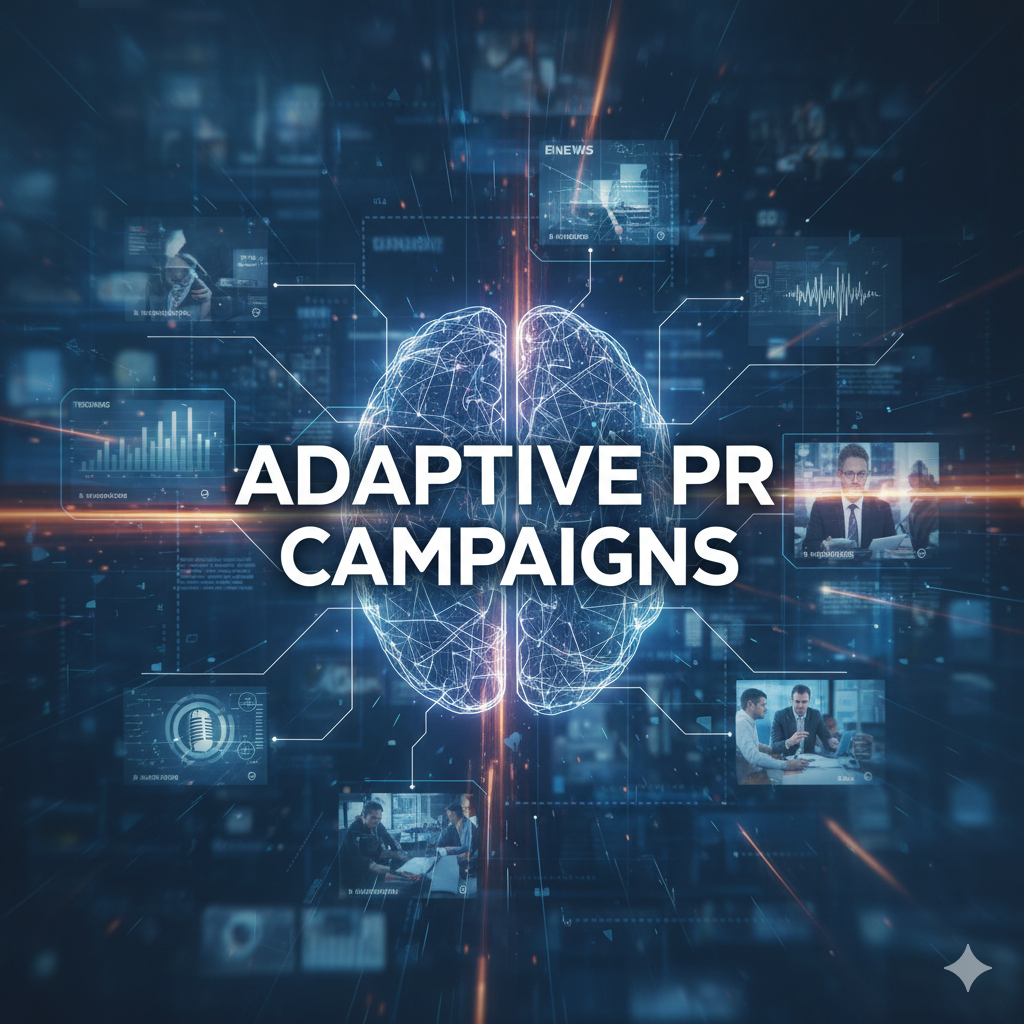
It starts small. A message that feels right. A story that lands the way it should. Then comes the real test: can you keep that same connection when the crowd grows bigger? That’s where things get tricky.
Scaling isn’t about shouting louder. It’s about keeping the same warmth when more people start to listen. And that’s what makes PR content personalization so powerful it stretches without snapping. It learns, adjusts, and somehow keeps its heartbeat steady, even when the audience doubles overnight.
Finding Balance in the Chaos
Once you start growing, messages can lose their edge. They start sounding safe, maybe too polished. But personalization can’t sound like a formula. It has to breathe.
Adaptive PR campaigns are built on that idea. They shift with every response, picking up clues from what people react to. Maybe it’s a phrase that keeps getting shared. Maybe it’s a headline that just feels right. Bit by bit, the message refines itself not by automation, but by awareness.
It’s a bit like cooking. You taste, you tweak, you trust your instinct. And soon, you know exactly when the flavor feels right.
Listening, Always
Scaling doesn’t mean you stop listening, it means you listen harder. The best campaigns don’t just collect data. They pay attention. They notice when people stop engaging, when their tone changes, when a trend starts to fade.
An adaptive campaign is like a living thing. It bends, not breaks. It notices when something isn’t working and shifts without losing its voice. That’s how connection stays real, even when the numbers climb.
Where Data Meets Gut
Data helps. It points you in the right direction. But creativity that’s what keeps it human.
Adaptive storytelling mixes both. The data gives hints. The gut gives meaning. Together, they make sure messages feel honest, not engineered. That’s what keeps personalization alive when scale kicks in.
Because no matter how big you grow, the message should still sound like it’s meant for one person.
Keeping the Human Thread
At its heart, scaling personalization isn’t about technology or trends. It’s about memory. Remembering what people care about, what they felt last time, what they might need next.
The best adaptive PR campaigns don’t replace connection, they multiply it. They stay open, curious, and grounded. And that’s when the balance shows large reach, but still deeply personal.
When that happens, scale doesn’t wash away the story. It amplifies it. One heartbeat, a thousand echoes. Still real. Still human.
Challenges in PR Content Personalization
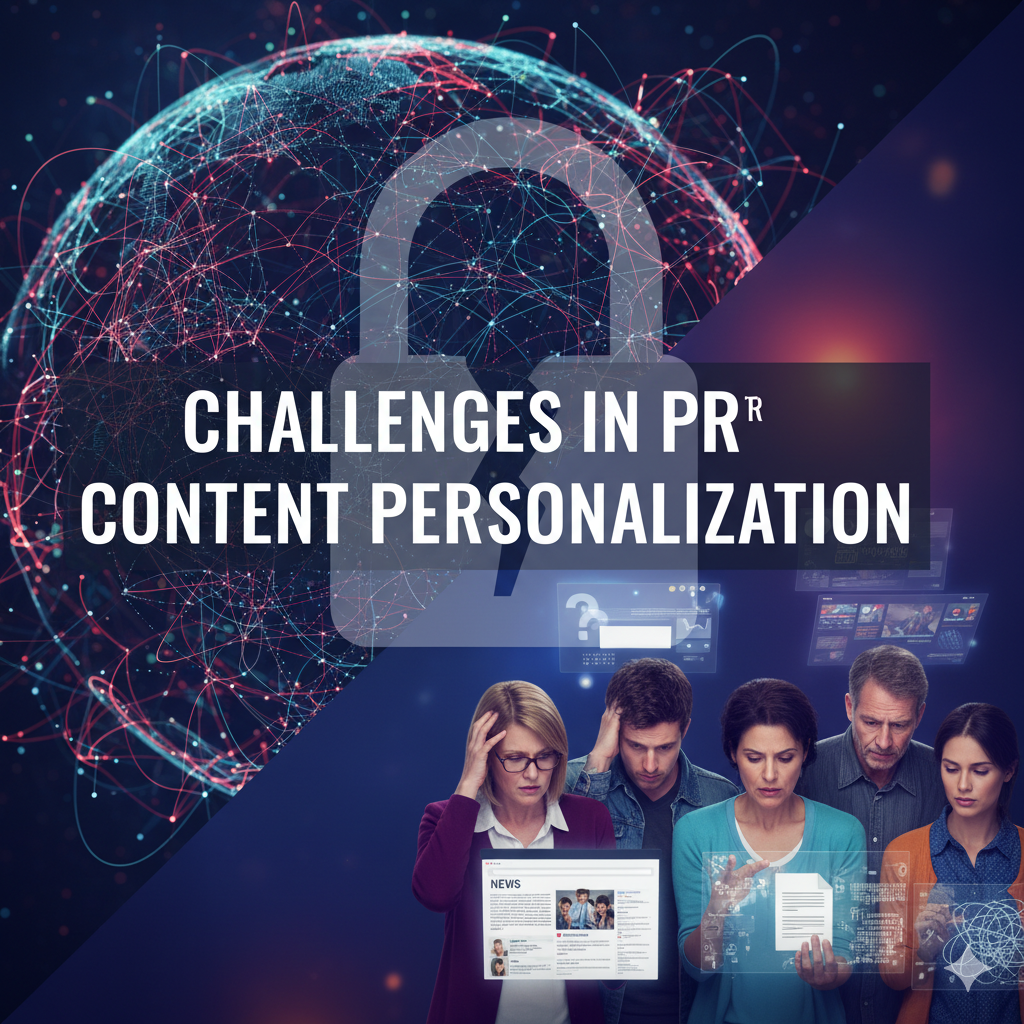
It always sounds simple on paper to understand your audience, tailor the message, and make it personal. But in reality, PR content personalization feels more like trying to catch light in your hands. You get some of it, but never all.
Because it’s not just about knowing who’s out there. It’s about finding the right tone, the right timing, and the right moment over and over again. And that’s where things start to get messy.
When Data Isn’t Enough
Everything starts with data. It’s supposed to help you see people better, what they like, what they react to, what keeps them scrolling. But sometimes, data tells half-truths.
It shows the clicks but not the feelings. The numbers but not the reasons. You can have all the reports in the world and still miss what really matters.
And then there’s privacy. Everyone wants personal experiences, but no one wants to feel watched. That’s the tightrope PR walks every day being close enough to understand, but far enough to respect.
Keeping the Voice Human
Consistency matters. Every message should sound like it comes from the same heart. But sameness? That’s the trap. When everything sounds too perfect, too smooth, people stop listening.
The best communicators know when to bend the rules. They mix polish with pulse. They let small imperfections stay because that’s what makes messages feel alive.
It’s easy to lose that balance when things move fast. One wrong tweak, and you go from personal to predictable.
The Weight of Expectation
Once personalization works, people start expecting it. They want that feeling again, that spark that made them stop and care.
And suddenly, every message carries more weight. Every story needs to connect. Every release needs to hit the right note. It’s not pressure for perfection, it’s pressure to mean something.
That can wear teams down, especially when there’s little time to breathe between campaigns. But that’s also where growth happens. The harder it gets, the sharper the instinct becomes.
Time The Silent Enemy
Personalization isn’t fast. It’s not something you can automate and forget. It takes patience. Listening. Testing. Adjusting.
For small teams, that’s the hardest part. You can’t rush understanding. You can only earn it. But once you do, every effort starts paying back. Messages land softer. Audiences stay longer. Trust builds slower but stronger.
Turning Struggle into Strength
All these hurdles, data gaps, time pressure, and high expectations don’t block the way. They shape it.
Every challenge pushes you to think deeper, write truer, and connect with more care. And maybe that’s the point. Personalization was never meant to be easy. It was meant to be real.
And when brands remember that, every obstacle becomes an opening a way to speak not just louder, but closer.
Emotional Intelligence in PR Personalization
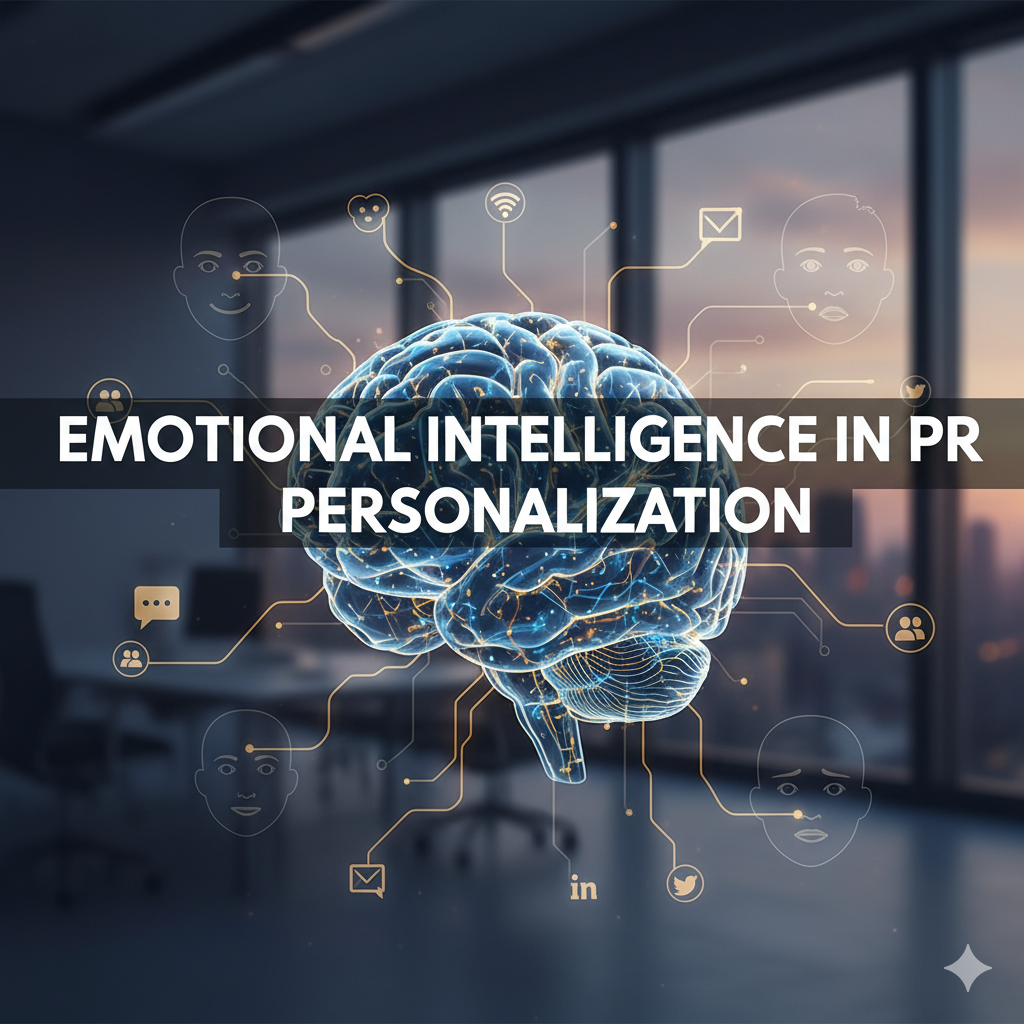
It’s easy to talk about data. Numbers line up neatly. Charts make sense. But emotions? They’re harder to measure and yet, they drive everything we do. That’s where emotional intelligence steps in. It’s what turns PR content personalization from smart to meaningful.
Why Feelings Matter More Than Formulas
Every message carries emotion, whether brands admit it or not. It’s in the tone of a headline, the pause before a quote, the warmth in a response. People can feel when a brand “gets” them and when it doesn’t. They don’t want perfect wording. They want honesty.
The funny thing is, emotion has always been part of PR. What’s changed is how it’s used. Before, brands talked to people. Now, they talk with them. And when emotion is handled right, the story doesn’t just inform it. It lingers. It builds trust without trying too hard.
Reading Between the Lines
Data tells you what happened. Emotion tells you why. A spike in engagement might look great on a report, but emotional intelligence digs deeper. It asks what was happening in people’s lives when they reacted that way? What did they feel?
That’s how teams at Impact Authority approach personalization. Not as numbers on a dashboard, but as moments of human behavior. They listen, not just track. They notice the tone of comments, the timing of reactions, the subtle changes that algorithms miss.
Because audiences aren’t static. They shift with the news, with seasons, with moods. Reading between those lines helps brands move in sync with real people, not just trends.
Making Emotion Part of Strategy
Emotional intelligence doesn’t mean pulling heartstrings in every post. It means being aware. Knowing when to be bold and when to be gentle. When humor works, and when silence says more.
Imagine launching a campaign after a major event that left people tense or uncertain. A brand that senses the mood will adjust its message, soften its tone, maybe even delay its launch. That sensitivity is what separates good communication from tone-deaf noise.
It’s about empathy that feels effortless. Strategy that feels human.
Blending Heart and Mind
At its best, emotional intelligence turns PR from promotion into conversation. It makes personalization less about prediction and more about presence. It reminds brands that every audience member is a person first.
And maybe that’s the point. PR content personalization isn’t just about data or reach, it’s about respect. It’s about knowing your story has power, but your empathy gives it meaning.
Because people forget statements. They forget campaigns. But they never forget how a message made them feel.
Integrating AI Tools Without Losing Authenticity

AI is everywhere now. It’s in the tools we write with, the dashboards we check, and the data that tells us what people care about. In PR, it’s tempting to hand over more control each day to let the machine take the lead. But the truth is, no algorithm can replace a voice that feels alive.
When Tech Knows, But You Still Feel
AI can sort, predict, and personalize faster than any human ever could. It can scan a thousand reactions in seconds and spot a pattern before anyone notices. For PR content personalization, that’s a gift. It helps you see what connects. It saves time. It gives clarity.
But emotion? That’s still a human job. The best messages don’t just land, they breathe. They have rhythm, humor, and warmth. You can’t automate that. You can’t teach a tool to care about tone, or to sense when silence says more than another post. That part still needs people.
So, the sweet spot isn’t letting AI speak for you. It’s letting it help you listen better.
Keeping the Real Voice Alive
Here’s where many go wrong. They let technology do the talking, and suddenly, every message starts to sound the same. Clean. Polished. But it’s cold.
People don’t want perfection. They want real. They want to hear a brand that stumbles a little, pauses, or smiles between the lines. That’s what feels human. And it’s that human texture that turns a generic press release into something that actually connects.
At Impact Authority, that balance matters. AI helps find what matters to people, but it’s the team that decides how to say it. They shape every line until it feels less like a statement and more like a conversation.
Letting Data Meet Intuition
AI brings the data; intuition brings the heartbeat. Together, they make storytelling stronger. One without the other feels flat.
You can use tools to map behaviors, track moods, even predict engagement but deciding what to say next still takes instinct. It takes someone reading between the numbers, sensing what the audience isn’t saying out loud.
Because in PR, understanding people isn’t just about knowing who they are. It’s about feeling what they need to hear.
Where the Two Worlds Meet
AI is here to stay, and that’s a good thing. It makes work smoother, decisions sharper. But authenticity that’s still handwritten.
So maybe the future of PR isn’t man or machine. It’s both, sharing the same desk. AI doing the math, humans doing the meaning.
Because no matter how advanced technology becomes, stories will always need a pulse.
The Future of Personalized PR

No one has a clear picture of where public relations is heading. Things move too fast for that. But one thing seems certain: the next wave of PR content personalization will feel less like marketing and more like conversation.
Technology will get smarter, sure. AI tools will predict moods, trends, even reactions. Yet the real shift won’t be about machines at all. It’ll be about people wanting something simple: to feel seen.
When Tech Learns to Listen
The future won’t be about louder campaigns. It’ll be about quieter understanding. The brands that win will be the ones that don’t just collect data, they listen to it.
AI will help, but it won’t tell the whole story. It can show patterns, but not emotion. It can track clicks, but not care. The difference will come from how teams use it with heart, not just with code.
And maybe that’s the sweet spot: when technology becomes a bridge, not a barrier.
Stories That Move, Not Just Spread
Every few months, the internet shifts. A new platform takes over, a new way of telling stories appears. What works one season feels flat the next.
The best PR campaigns will move with that flow. They’ll sense when to speak up and when to pause. They’ll respond to what people feel, not just what they say.
It’s less about chasing the next viral thing and more about staying human while everything else speeds up.
The Trust Factor
Here’s the truth: people can tell when something’s fake. They can smell it instantly.
That’s why the future of PR won’t be about selling stories, it’ll be about earning belief. When a brand understands its audience deeply enough to speak their language, that’s when real trust begins. And once that happens, loyalty follows quietly, almost naturally.
What Comes Next
No one’s writing the final chapter yet. PR is still rewriting itself every day. But it’s safe to say that personalization will sit at its core.
The challenge? Keeping the message human in a digital world that never sleeps.
The opportunity? Building relationships that feel genuine, no matter how advanced the tools get.
Because in the end, people don’t remember data points. They remember how you made them feel.
Conclusion
It always circles back to people. Not platforms. Not data. Just people trying to reach each other in a noisy world. That’s what PR content personalization really is finding the human heartbeat in every message.
The tech helps, sure. It makes things smoother, faster, easier to track. But it can’t replace the feeling behind the words. It can’t see the small things, the timing, the tone, the tiny spark that makes someone care.
The truth is, connection still beats perfection. The brands that last are the ones that sound like they mean it. They speak simply. They listen more. They show up, even when there’s nothing to sell.
And maybe that’s the point. PR isn’t just about being seen, it’s about being felt. When a story feels real, people remember. They stay. And that’s where trust begins.

